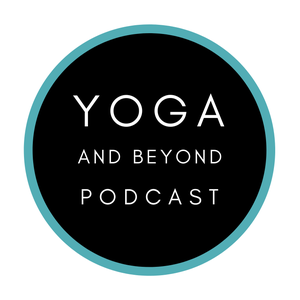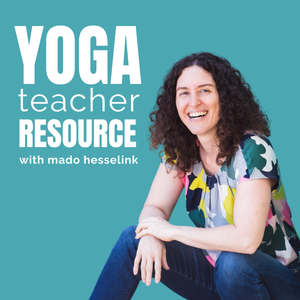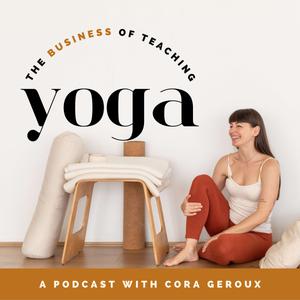
Yoga & Beyond | The Yoga and Movement Science Podcast
Ariana Rabinovitch
The Yoga and Movement Science Podcast
- 16 minutes 36 secondsEpisode 72: RCTs vs. Pilot Studies vs. Feasibility Studies: A Simple Guide for Yoga Teachers
In this episode, Ariana and Jules get into the distinctions between randomized clinical trials (RCTs), feasibility studies, and pilot studies. They discuss the importance of understanding these methodologies in the context of yoga research and the common misconceptions surrounding them. The conversation highlights the role of preliminary studies in developing effective interventions and the significance of case studies in building evidence for future research. Additionally, they explore the concept of the null hypothesis and its implications in research design.
Takeaways
🤩RCTs are designed to fully test a treatment or intervention.
🤩Feasibility studies assess the practicality of conducting a full RCT.
🤩Pilot studies serve as a 'dress rehearsal' for larger studies.
🤩Misunderstandings about research terminology are common among practitioners.
🤩Case studies can provide valuable insights for future research funding.
🤩Old research can still be relevant and informative.
🤩Understanding the null hypothesis is crucial for research integrity.
🤩Research literacy is essential for yoga teachers and practitioners.
🤩Preliminary studies help refine interventions before larger trials.
🤩Clear communication in research publications is vital to avoid misleading conclusions.
Chapters
00:00 Understanding Research Methodologies
02:34 The Role of Feasibility and Pilot Studies
05:37 Misunderstandings in Research Terminology
08:22 The Importance of Case Studies
11:17 Exploring the Null Hypothesis
15 November 2024, 10:09 pm - 19 minutes 1 secondEpisode 71: Can Online Yoga Support Cancer Patients? Insights from a New Study Protocol
In this episode, Ariana and Jules discuss a planned study on the efficacy of an online yoga intervention for cancer patients, specifically those with high-grade gliomas, and their caregivers. They explore the unique aspects of the study, including its design, the importance of trial registration, and the challenges faced in previous online yoga research. The conversation highlights the potential benefits of online yoga for improving overall well-being in this vulnerable population.
Takeaways
🌟The study focuses on high-grade glioma patients and their caregivers.
🌟Online yoga is a complementary treatment alongside traditional medical care.
🌟Trial registration ensures transparency in research methodologies.
🌟Self-reported outcomes and physiological measurements will be assessed.
🌟Caregivers often experience higher levels of anxiety and depression than patients.
🌟The study aims to alleviate distress through an eight-week yoga program.
🌟Online interventions can increase accessibility for patients with mobility issues.
🌟Previous studies faced challenges regarding safety and correct form in online yoga.
🌟The shift to online yoga due to COVID-19 may have positive implications for accessibility.
🌟Future research is needed to explore the efficacy of online yoga interventions.
Chapters
00:00 Introduction to the Yoga Study for Cancer Patients
02:40 Study Design and Methodology
05:45 The Importance of Trial Registration
08:42 Unique Aspects of the Yoga Intervention
11:17 Challenges and Insights from Previous Studies
14:33 The Future of Online Yoga Research
15 November 2024, 10:04 pm - 22 minutes 48 secondsEpisode 70: The Reliability and Validity of Pain Surveys
In this episode, Ariana and Jules discuss the significance of Patient Reported Outcome Measures (PROMs) in understanding patient experiences, particularly in the context of pain management. They delve into a specific study focused on the Pain Catastrophizing Scale (PCS) and the Tampa Scale for Kinesiophobia (TSK), exploring the methods used to validate and shorten these surveys for better usability. The conversation highlights the importance of reliability and validity in research, the limitations of the study, especially regarding gender representation, and the insights gained from the survey questions. The episode emphasizes the need for compassion and understanding in dealing with patients experiencing pain.
Takeaways *PROMs are essential for clinicians to understand treatment plans. *The study aimed to shorten long surveys for better usability. *Reliability refers to the consistency of a test or survey. *Validity measures the accuracy of the survey results. *The biopsychosocial model is crucial in understanding pain. *Expert opinions were used to validate the survey questions. *The study had a significant male bias in its sample. *Pain experiences can differ significantly between genders. *Compassionate communication is key when dealing with pain. *Meta-science plays a vital role in developing effective surveys.
Chapters 00:00 Introduction to PROMs and Their Importance 03:11 Understanding the Paper: Pain Catastrophizing and Kinesiophobia 06:09 The Process of Shortening Surveys 08:59 Reliability vs. Validity in Research 11:49 Limitations of the Study 14:57 Insights from the Survey Questions 17:47 Conclusion and Final Thoughts
29 September 2024, 2:17 pm - 24 minutes 25 secondsEpisode 69: Synchronized Breathing
In this episode, we discuss a randomized pilot trial on synchronized breathing for chronic nonspecific low back pain. We highlight key features of the study, such as the exercise program, the patient reported outcome measurements, and the feasibility and preliminary efficacy of adding synchronized breathing. We also discuss the importance of trial registration and transparency in research. Overall, the study showed positive results in reducing back pain with synchronized breathing, but further research is needed to validate these findings.
Takeaways
*Synchronized breathing may be effective in reducing chronic nonspecific low back pain.
*The study used a randomized pilot trial design to assess the feasibility and preliminary efficacy of adding synchronized breathing to an exercise program.
*The exercise program included basic movements commonly found in yoga and Pilates.
*The study measured various patient reported outcome measurements, including pain catastrophizing, kinesiophobia, pain self-efficacy, and general anxiety. *
Transparency in research, including trial registration and data sharing, is important for ensuring the validity and reproducibility of study findings.
Sections
00:00 Introduction and Background
05:33 Discussion on Exercise Selection and Mechanisms
11:15 Feasibility and Preliminary Efficacy
15:37 Burden and Adherence
21:18 Importance of Pre-Registering Clinical Trials
23:42 Conclusion and Future
2 September 2024, 11:09 pm - 22 minutes 40 secondsEpisode 68: Yoga vs Stretching for Neck and Shoulder Pain
In this insightful episode of the Yoga Research and Beyond podcast, hosts Jules Mitchell and Ariana Rabinovitch dive into the research paper, "Pain reduction, physical performance, and psychological status compared between Hatha yoga and stretching exercise to treat sedentary office workers with mild/moderate neck/shoulder pain: A randomized controlled non-inferiority trial."
Join as we explore:
- Details of the intervention and adherence rates
- What dropout rates are and what they mean for the study
- What's a non-inferiority trial?
- A discussion on the study providing p-values but not effect sizes
This episode is perfect for yoga teachers aiming to boost their research literacy and for anyone interested in understanding the nuances of scientific studies related to yoga and exercise science. Enhance your knowledge and teaching practice with evidence-based insights!
26 July 2024, 4:50 pm - 21 minutes 27 secondsEpisode 67: Not All Yoga Styles Are The Same
Join hosts Jules Mitchell and Ariana Rabinovitch in this new episode of the Yoga Research and Beyond podcast as they discuss the research paper, "Not All Yoga Styles Are the Same: An International Survey on Characteristics of Yoga Classes."
They explore:
- The various categories and styles of yoga classified in the paper
- The advantages and limitations of using surveys as a research method
- How subjective data can be measured effectively through operational definitions
Whether you're a yoga teacher looking to enhance your research literacy or deepen your understanding of yoga styles, this discussion is tailored for you. Gain valuable insights into the diverse world of yoga practices and learn how to critically evaluate research methods and findings. Tune in to empower your teaching with evidence-based knowledge!
26 July 2024, 4:45 pm - 17 minutes 38 secondsEpisode 66: Yin Yoga for Anxiety
In this episode, we dive deep into the methods of an observational study on the effects of Yin Yoga on anxiety.
We explored these key topics:
1. Understanding Anxiety: Anxiety is a psychological, physiological, and behavioral state triggered by perceived threats to emotional security and survival.
2. State Anxiety vs Trait Anxiety: Anxiety can be a temporary response to an event or it can be a reflection of one's personality.
3. COVID-19 Impact: The pandemic's significant influence on mental health, increasing anxiety disorders, and the challenges of remote work.
4. Yin Yoga as an Effective Non-Pharmacological Intervention: The role of physical and mental exercises, particularly yoga, in alleviating anxiety and enhancing well-being.
5. Research Findings: A brief look at the details of this study conducted in Latvia during the COVID-19 pandemic, focusing on the effects of Yin yoga on state and trait anxiety among women.
Like, comment, and subscribe for more insightful reviews and discussions on yoga research!
26 July 2024, 4:01 pm - 29 minutes 11 secondsEpisode 65: Slow BreathingSlow Breathing: Samavriti and Visamavriti Pranayama for Reducing Stress
In our first podcast episode under the new format, we review the paper Slow breathing for reducing stress: The effect of extending exhale. Our main focus was the methods section. Here are some basics we covered:
- Randomization and blinding challenges in yoga research
- Slow breathing parameters for study inclusion/exclusion
- Participant screening for eligiblity
- Outcome measures
- Heart Rate Variability (HRV) using ECG
- PROMIS Anxiety Score – self-reported
- Effect size versus p-value
- Intervention sources – Heart of Yoga by TKV Desikachar
- Conclusions yoga teachers can safely make
12 June 2024, 8:00 pm - 11 minutes 39 secondsEpisode 64: Welcome to the New YRB FormatWelcome to the Yoga Research & Beyond Podcast! 🎧
Struggling with all the conflicting fitness advice? Ariana Raven and Jules Mitchell have got you covered! 🧘♀️📖 Join them as they break down the latest research on yoga and exercise, debunk myths, and teach you how to apply scientific findings to the way you teach yoga.
Perfect for yoga teachers and fitness pros who want to ground their practice in science. Tune in for lively discussions, research insights, and a fun learning experience! 🌟
12 June 2024, 7:55 pm - 25 minutes 56 secondsY&B #63 - What's the best hamstring stretch? Comparison of four techniques
How often do your students ask for help with tight hamstrings? In this episode Jenn Pilotti and I discuss a study that compared 4 stretching techniques for greater hamstring flexibility. This study from the Journal of Strength and Conditioning Research compared two active stretches and two passive stretches in 100 people over the course of 8 weeks. It’s clear that one resulted in the greatest gains. We discuss the results here and in our Yoga Research and Beyond review.
12 December 2017, 11:30 am - 31 minutes 37 secondsY&B #62 - Buteyko Breathing and Asthma
How can Buteyko breathing help with asthma? Research shows 6-30% of asthma sufferers use breathing methods to alleviate their asthma symptoms in the UK. Catherine and I discuss a paper from the Complementary Therapies in Medicine journal about Buteyko breathing and asthma.
Buteyko breathing technique (BBT) is a method that is used in some practices to help with hyperventilation, and asthma. BBT trains people to slow their breath rate, eliminate mouth breathing (using a small strip of tape on the mouth), and use controlled breath pauses to increase CO2 levels. Russian physiologist, Konstantin Buteyko, created it in the 1950’s after experimenting with a slower breathing rate on himself and his patients. He postulated that hyperventilation and mouth breathing create hypocapnia (low CO2), which causes hundreds of ailments, including bronchospasm.
28 November 2017, 11:30 am - More Episodes? Get the App
Your feedback is valuable to us. Should you encounter any bugs, glitches, lack of functionality or other problems, please email us on [email protected] or join Moon.FM Telegram Group where you can talk directly to the dev team who are happy to answer any queries.
 Yoga Teacher Resource Podcast
Yoga Teacher Resource Podcast
 The Business Of Teaching Yoga
The Business Of Teaching Yoga